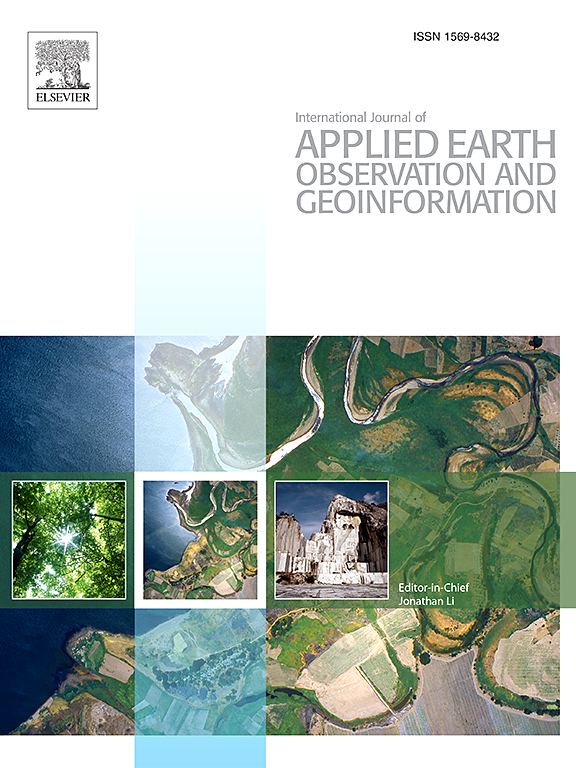Automatic generation of high-quality building samples using OpenStreetMap and deep learning
IF 7.6
Q1 REMOTE SENSING
International journal of applied earth observation and geoinformation : ITC journal
Pub Date : 2025-05-01
DOI:10.1016/j.jag.2025.104564
引用次数: 0
Abstract
Existing building annotation methods require significant human resources or other costs, making it challenging to achieve both low cost and high efficiency simultaneously. Crowdsourced OpenStreetMap (OSM) data, with its extensive volume and openness, is widely used for annotation purposes. However, issues such as missing quality information and poor data completeness have hindered its potential to generate deep-learning samples. In this context, our research developed an automated method for generating high-quality building samples based on OSM and deep learning. To address the impact of poor OSM data completeness, we designed a Region-Of-Interest (ROI) generation algorithm to alleviate the negative impact of missing annotations during model training. Leveraging the superior performance of models specialized in the building extraction domain, we devised a method for selecting high-quality samples. Experimental results on the open-source simulation datasets WHU-SIM, MASS-SIM, and real environments in the San Angelo and Washington regions demonstrated the effectiveness of this method. We produced high-quality building samples with a resolution of 0.3 m for the San Angelo and Washington areas, enriching the available data in the building extraction field. This research advances the application of OSM in the remote sensing domain and provides comprehensive insights into its potential for automated sample generation in deep learning.
使用OpenStreetMap和深度学习自动生成高质量的建筑样本
现有的建筑标注方法需要大量的人力资源或其他成本,很难同时实现低成本和高效率。众包的OpenStreetMap (OSM)数据以其庞大的容量和开放性被广泛用于标注目的。然而,缺少质量信息和数据完整性差等问题阻碍了其生成深度学习样本的潜力。在此背景下,我们的研究开发了一种基于OSM和深度学习的自动化方法来生成高质量的建筑样本。为了解决OSM数据完整性差的影响,我们设计了一种感兴趣区域(ROI)生成算法,以减轻模型训练过程中缺少注释的负面影响。利用建筑提取领域模型的卓越性能,我们设计了一种选择高质量样本的方法。在开源仿真数据集WHU-SIM、MASS-SIM以及San Angelo和Washington地区的真实环境上的实验结果证明了该方法的有效性。我们为San Angelo和Washington地区制作了分辨率为0.3 m的高质量建筑样本,丰富了建筑提取领域的可用数据。本研究推进了OSM在遥感领域的应用,并提供了其在深度学习中自动生成样本的潜力的全面见解。
本文章由计算机程序翻译,如有差异,请以英文原文为准。
求助全文
约1分钟内获得全文
求助全文
来源期刊

International journal of applied earth observation and geoinformation : ITC journal
Global and Planetary Change, Management, Monitoring, Policy and Law, Earth-Surface Processes, Computers in Earth Sciences
CiteScore
12.00
自引率
0.00%
发文量
0
审稿时长
77 days
期刊介绍:
The International Journal of Applied Earth Observation and Geoinformation publishes original papers that utilize earth observation data for natural resource and environmental inventory and management. These data primarily originate from remote sensing platforms, including satellites and aircraft, supplemented by surface and subsurface measurements. Addressing natural resources such as forests, agricultural land, soils, and water, as well as environmental concerns like biodiversity, land degradation, and hazards, the journal explores conceptual and data-driven approaches. It covers geoinformation themes like capturing, databasing, visualization, interpretation, data quality, and spatial uncertainty.
 求助内容:
求助内容: 应助结果提醒方式:
应助结果提醒方式:


